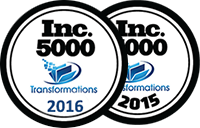A More Efficient Workflow Starts with a Close Look at Every Process
Whether it’s handled in-house or through a print service provider (PSP), a high-volume mailing operation is without a doubt facing increasingly fierce competition across the industry. End users and customers are demanding lower costs and, at the same time, faster turnarounds—often with same-day service level agreements (SLAs) and, of course, 100% accuracy. Meeting these demands means taking a close look at every stage of the production cycle and determining how each might be streamlined to run more efficiently.
Increasing efficiency begins with establishing metrics to assess the costs and benefits of each process, identify bottlenecks and illuminate opportunities for improvement. Most workflows are complex and combine multiple solutions to accomplish their end result. For PSPs, since data often arrives from clients in a variety of formats, organizations may be using multiple different software applications that each perform a single limited function in the production cycle. While this may meet customers’ needs in the short term, linking solutions and processes that were not necessarily designed to work together can trigger several problems—most significantly, inefficient workflow and inconsistent quality.
To identify parts of the production cycle that would most benefit from streamlining, one idea is to assign a number to every process that takes into account its cost and how it adds or subtracts from your bottom line. This ultimately distinguishes value-added processes from non-value-added processes, making it possible to identify which ones should be made more efficient or eliminated entirely. A variety of other performance metrics can be applied at this stage to assess categories such as employee and departmental performance, the efficacy of performance incentives and customer-level profitability. Each of these metrics can assist in highlighting not only the initiatives that bring in the greatest profit, but also those that are most closely aligned with your organizational focus.
After a thorough assessment of the workflow, the next step is to introduce automation as a replacement for manual processes that are particularly time-consuming or error prone. While implementing new equipment and software solutions at every stage of production may be cost-prohibitive, particularly for small and mid-size organizations, the initial workflow assessment makes it possible to implement automation strategically, targeting only the processes with the greatest need for increased efficiency. For example, barcodes can be introduced to identify and track work, whether individual pieces or larger batches. Introducing camera systems can allow operators to run at full speed without fear of error because the cameras automate quality control (sequence verification, file audit), identify errors and can either automate reprints instantly or put them on hold for the next production run.
Other improvements include tracking items individually, automating reports and using a dashboard to better schedule and control overall production. Baseline document templates can also speed up implementation time through design elements such as barcode or address locations, placement of sequence numbers or optimal weight and identification of consumables. Additionally, batching or combining jobs that use the same consumables or that follow the same processes will help maximize gains from automation—not only by increasing overall efficiency, but also by making it possible to bundle communications to meet USPS requirements for additional postage discounts.
Many high-volume mailers add new processes or technologies to solve an immediate challenge or to satisfy a specific customer requirement, without first considering the impact of these new procedural elements on overall production. However, maximizing efficiency requires a more holistic examination of workflow, so you can incorporate new solutions like automation strategically, focusing on the processes with the highest need for increased efficiency. Improving processes in this way enables faster, more efficient production overall, setting you up for the best chance of success in this highly demanding and competitive marketplace.
Back to Blogs








